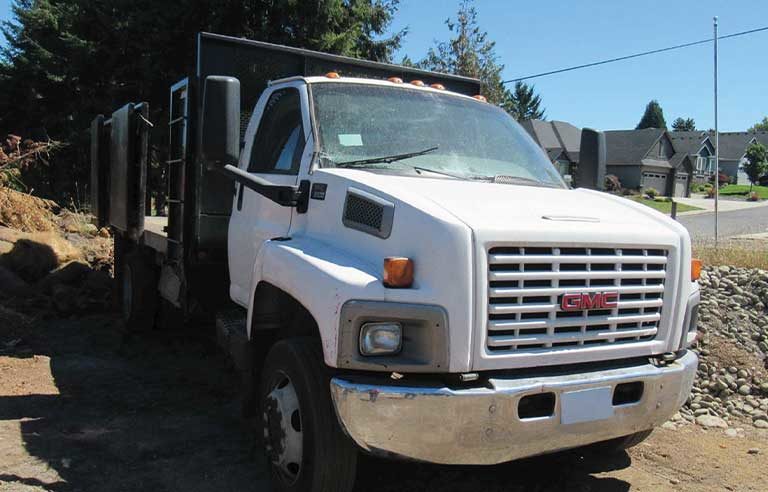FACE Report: Construction worker struck by rollaway dump truck

Case report: 71-246-2023
Issued by: Washington State Fatality Assessment and Control Evaluation Program
Date of report: Oct. 23, 2023
A 45-year-old construction worker employed by a custom homebuilder arrived at a site to finish punch list items for a new home. The worker was pressure-washing the home’s driveway when a worker from a landscaping business arrived and parked a medium-duty dump truck at the top of the driveway. The truck was loaded with pallets of small pavers, stepping-stones and crushed rock. The top of the driveway had a slight, hardly visible slope. The driver told the worker he was going to talk with the homeowner to ask where to put the materials. He left the truck unattended. The worker continued to pressure-wash the driveway. About six minutes later, the dump truck rolled down the driveway and struck the worker, whose back was toward the truck. No one saw the incident, but the driver, homeowner and project manager heard the truck crash. After they saw the truck in a nearby ditch, they went to the front of the house and found the worker face down on the driveway. First responders pronounced him dead at the scene. Investigators found that the dump truck was parked in first gear; the emergency brake was set but did not work; and the truck was being leased from another landscaping business owner, who did not have the required annual Department of Transportation commercial motor vehicle inspection performed on the truck and knew the emergency brake did not work.
To help prevent similar occurrences, employers should:
- Request subcontractors to show current maintenance and safety inspection records, including annual DOT inspection stickers, for any commercial vehicles they own or lease that will be used on the construction site. Do not allow unsafe vehicles to drive onsite.
- Advise site owners to ask other contractors they hire directly to show safety inspection records for any commercial vehicles before they drive onsite. Emphasize the need to prevent hazardous vehicle rollaways.
Post a comment to this article
Safety+Health welcomes comments that promote respectful dialogue. Please stay on topic. Comments that contain personal attacks, profanity or abusive language – or those aggressively promoting products or services – will be removed. We reserve the right to determine which comments violate our comment policy. (Anonymous comments are welcome; merely skip the “name” field in the comment box. An email address is required but will not be included with your comment.)

